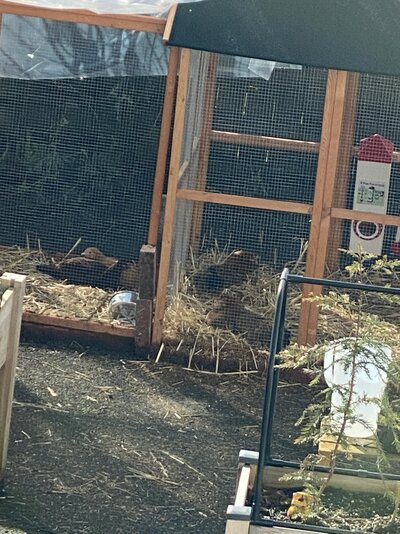Sarah2020
Songster
- Dec 26, 2020
- 86
- 77
- 126
Hello everyone!
I've read a lot about integrating new chickens and some camps that say "just throw them in" others that say "sneak them in at night" and others that say "slowly let them see but not touch." We decided to do a see and not touch method. We have the 3-month olds (one buff orp & one rhode island red) on one side of the run and the 1-year-olds (Amerecaunas) on the other, completely separated but they can see each other.
Well today, my husband stuck them all in the run without the door to divide them and I found out after the fact (probably less than an hour). Now, I look outside and see all four of them laying as close as they can be to each other with the divider in-between (picture below). Should I take this to mean they're ready for full integration?

I've read a lot about integrating new chickens and some camps that say "just throw them in" others that say "sneak them in at night" and others that say "slowly let them see but not touch." We decided to do a see and not touch method. We have the 3-month olds (one buff orp & one rhode island red) on one side of the run and the 1-year-olds (Amerecaunas) on the other, completely separated but they can see each other.
Well today, my husband stuck them all in the run without the door to divide them and I found out after the fact (probably less than an hour). Now, I look outside and see all four of them laying as close as they can be to each other with the divider in-between (picture below). Should I take this to mean they're ready for full integration?






